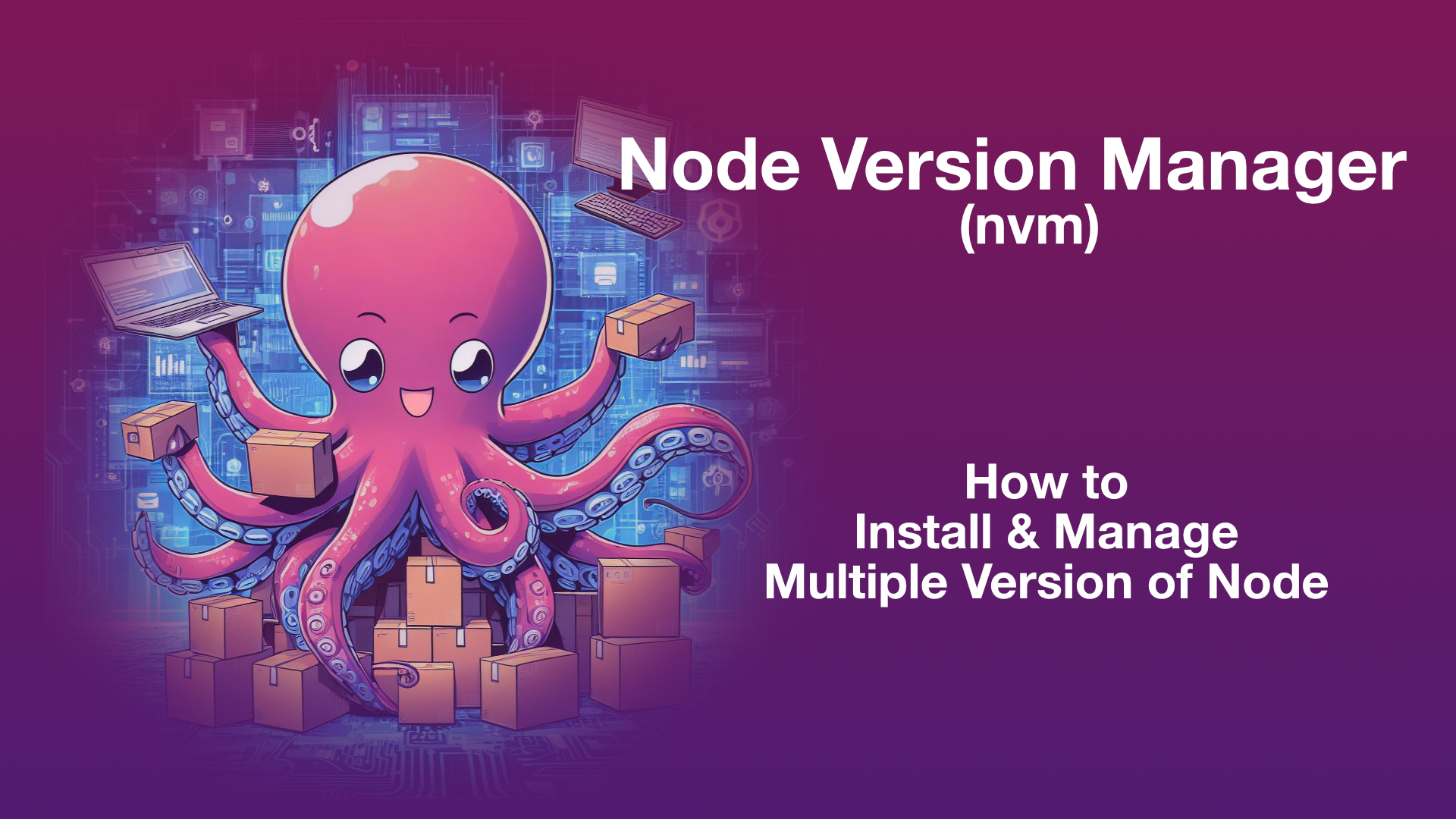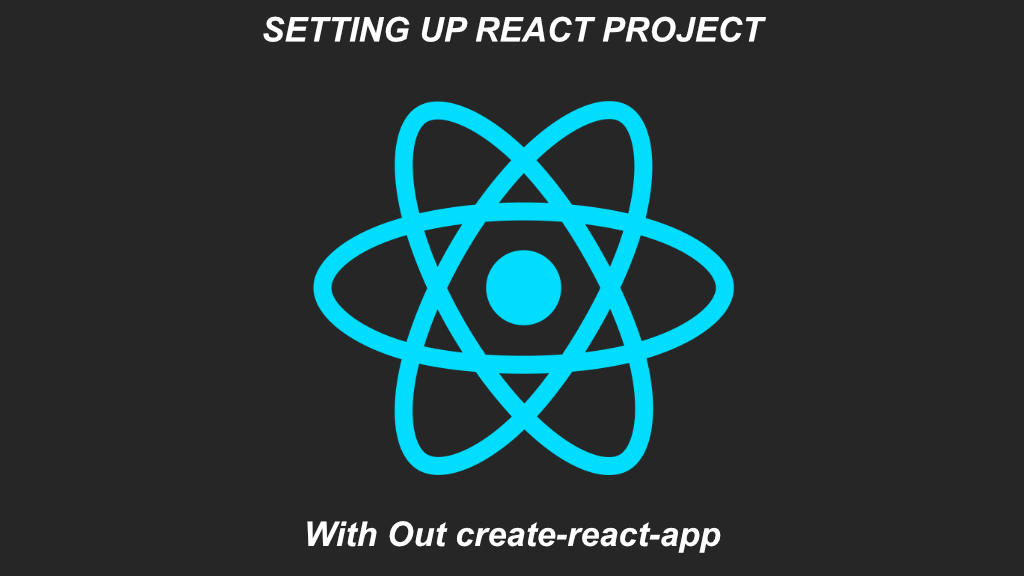COMMAND check
usage: django-admin check [-h] [--tag TAGS] [--list-tags] [--deploy] [--fail-level {CRITICAL,ERROR,WARNING,INFO,DEBUG}] [--database DATABASES] [--version] [-v {0,1,2,3}] [--settings SETTINGS] [--pythonpath PYTHONPATH] [--traceback] [--no-color] [--force-color]
[app_label ...]
Checks the entire Django project for potential problems.
positional arguments:
app_label
optional arguments:
-h, --help show this help message and exit
--tag TAGS, -t TAGS Run only checks labeled with given tag.
--list-tags List available tags.
--deploy Check deployment settings.
--fail-level {CRITICAL,ERROR,WARNING,INFO,DEBUG}
Message level that will cause the command to exit with a non-zero status. Default is ERROR.
--database DATABASES Run database related checks against these aliases.
--version Show program's version number and exit.
-v {0,1,2,3}, --verbosity {0,1,2,3}
Verbosity level; 0=minimal output, 1=normal output, 2=verbose output, 3=very verbose output
--settings SETTINGS The Python path to a settings module, e.g. "myproject.settings.main". If this isn't provided, the DJANGO_SETTINGS_MODULE environment variable will be used.
--pythonpath PYTHONPATH
A directory to add to the Python path, e.g. "/home/djangoprojects/myproject".
--traceback Raise on CommandError exceptions.
--no-color Don't colorize the command output.
--force-color Force colorization of the command output.
COMMAND compilemessages
usage: django-admin compilemessages [-h] [--locale LOCALE] [--exclude EXCLUDE] [--use-fuzzy] [--ignore PATTERN] [--version] [-v {0,1,2,3}] [--settings SETTINGS] [--pythonpath PYTHONPATH] [--traceback] [--no-color] [--force-color]
Compiles .po files to .mo files for use with builtin gettext support.
optional arguments:
-h, --help show this help message and exit
--locale LOCALE, -l LOCALE
Locale(s) to process (e.g. de_AT). Default is to process all. Can be used multiple times.
--exclude EXCLUDE, -x EXCLUDE
Locales to exclude. Default is none. Can be used multiple times.
--use-fuzzy, -f Use fuzzy translations.
--ignore PATTERN, -i PATTERN
Ignore directories matching this glob-style pattern. Use multiple times to ignore more.
--version Show program's version number and exit.
-v {0,1,2,3}, --verbosity {0,1,2,3}
Verbosity level; 0=minimal output, 1=normal output, 2=verbose output, 3=very verbose output
--settings SETTINGS The Python path to a settings module, e.g. "myproject.settings.main". If this isn't provided, the DJANGO_SETTINGS_MODULE environment variable will be used.
--pythonpath PYTHONPATH
A directory to add to the Python path, e.g. "/home/djangoprojects/myproject".
--traceback Raise on CommandError exceptions.
--no-color Don't colorize the command output.
--force-color Force colorization of the command output.
COMMAND createcachetable
usage: django-admin createcachetable [-h] [--database DATABASE] [--dry-run] [--version] [-v {0,1,2,3}] [--settings SETTINGS] [--pythonpath PYTHONPATH] [--traceback] [--no-color] [--force-color] [table_name ...]
Creates the tables needed to use the SQL cache backend.
positional arguments:
table_name Optional table names. Otherwise, settings.CACHES is used to find cache tables.
optional arguments:
-h, --help show this help message and exit
--database DATABASE Nominates a database onto which the cache tables will be installed. Defaults to the "default" database.
--dry-run Does not create the table, just prints the SQL that would be run.
--version Show program's version number and exit.
-v {0,1,2,3}, --verbosity {0,1,2,3}
Verbosity level; 0=minimal output, 1=normal output, 2=verbose output, 3=very verbose output
--settings SETTINGS The Python path to a settings module, e.g. "myproject.settings.main". If this isn't provided, the DJANGO_SETTINGS_MODULE environment variable will be used.
--pythonpath PYTHONPATH
A directory to add to the Python path, e.g. "/home/djangoprojects/myproject".
--traceback Raise on CommandError exceptions.
--no-color Don't colorize the command output.
--force-color Force colorization of the command output.
COMMAND dbshell
usage: django-admin dbshell [-h] [--database DATABASE] [--version] [-v {0,1,2,3}] [--settings SETTINGS] [--pythonpath PYTHONPATH] [--traceback] [--no-color] [--force-color] [parameters ...]
Runs the command-line client for specified database, or the default database if none is provided.
optional arguments:
-h, --help show this help message and exit
--database DATABASE Nominates a database onto which to open a shell. Defaults to the "default" database.
--version Show program's version number and exit.
-v {0,1,2,3}, --verbosity {0,1,2,3}
Verbosity level; 0=minimal output, 1=normal output, 2=verbose output, 3=very verbose output
--settings SETTINGS The Python path to a settings module, e.g. "myproject.settings.main". If this isn't provided, the DJANGO_SETTINGS_MODULE environment variable will be used.
--pythonpath PYTHONPATH
A directory to add to the Python path, e.g. "/home/djangoprojects/myproject".
--traceback Raise on CommandError exceptions.
--no-color Don't colorize the command output.
--force-color Force colorization of the command output.
parameters:
parameters
COMMAND diffsettings
usage: django-admin diffsettings [-h] [--all] [--default MODULE] [--output {hash,unified}] [--version] [-v {0,1,2,3}] [--settings SETTINGS] [--pythonpath PYTHONPATH] [--traceback] [--no-color] [--force-color]
Displays differences between the current settings.py and Django's default settings.
optional arguments:
-h, --help show this help message and exit
--all Display all settings, regardless of their value. In "hash" mode, default values are prefixed by "###".
--default MODULE The settings module to compare the current settings against. Leave empty to compare against Django's default settings.
--output {hash,unified}
Selects the output format. 'hash' mode displays each changed setting, with the settings that don't appear in the defaults followed by ###. 'unified' mode prefixes the default setting with a minus sign, followed by the changed setting prefixed
with a plus sign.
--version Show program's version number and exit.
-v {0,1,2,3}, --verbosity {0,1,2,3}
Verbosity level; 0=minimal output, 1=normal output, 2=verbose output, 3=very verbose output
--settings SETTINGS The Python path to a settings module, e.g. "myproject.settings.main". If this isn't provided, the DJANGO_SETTINGS_MODULE environment variable will be used.
--pythonpath PYTHONPATH
A directory to add to the Python path, e.g. "/home/djangoprojects/myproject".
--traceback Raise on CommandError exceptions.
--no-color Don't colorize the command output.
--force-color Force colorization of the command output.
COMMAND dumpdata
usage: django-admin dumpdata [-h] [--format FORMAT] [--indent INDENT] [--database DATABASE] [-e EXCLUDE] [--natural-foreign] [--natural-primary] [-a] [--pks PRIMARY_KEYS] [-o OUTPUT] [--version] [-v {0,1,2,3}] [--settings SETTINGS] [--pythonpath PYTHONPATH]
[--traceback] [--no-color] [--force-color] [--skip-checks]
[app_label[.ModelName] ...]
Output the contents of the database as a fixture of the given format (using each model's default manager unless --all is specified).
positional arguments:
app_label[.ModelName]
Restricts dumped data to the specified app_label or app_label.ModelName.
optional arguments:
-h, --help show this help message and exit
--format FORMAT Specifies the output serialization format for fixtures.
--indent INDENT Specifies the indent level to use when pretty-printing output.
--database DATABASE Nominates a specific database to dump fixtures from. Defaults to the "default" database.
-e EXCLUDE, --exclude EXCLUDE
An app_label or app_label.ModelName to exclude (use multiple --exclude to exclude multiple apps/models).
--natural-foreign Use natural foreign keys if they are available.
--natural-primary Use natural primary keys if they are available.
-a, --all Use Django's base manager to dump all models stored in the database, including those that would otherwise be filtered or modified by a custom manager.
--pks PRIMARY_KEYS Only dump objects with given primary keys. Accepts a comma-separated list of keys. This option only works when you specify one model.
-o OUTPUT, --output OUTPUT
Specifies file to which the output is written.
--version Show program's version number and exit.
-v {0,1,2,3}, --verbosity {0,1,2,3}
Verbosity level; 0=minimal output, 1=normal output, 2=verbose output, 3=very verbose output
--settings SETTINGS The Python path to a settings module, e.g. "myproject.settings.main". If this isn't provided, the DJANGO_SETTINGS_MODULE environment variable will be used.
--pythonpath PYTHONPATH
A directory to add to the Python path, e.g. "/home/djangoprojects/myproject".
--traceback Raise on CommandError exceptions.
--no-color Don't colorize the command output.
--force-color Force colorization of the command output.
--skip-checks Skip system checks.
COMMAND flush
usage: django-admin flush [-h] [--noinput] [--database DATABASE] [--version] [-v {0,1,2,3}] [--settings SETTINGS] [--pythonpath PYTHONPATH] [--traceback] [--no-color] [--force-color] [--skip-checks]
Removes ALL DATA from the database, including data added during migrations. Does not achieve a "fresh install" state.
optional arguments:
-h, --help show this help message and exit
--noinput, --no-input
Tells Django to NOT prompt the user for input of any kind.
--database DATABASE Nominates a database to flush. Defaults to the "default" database.
--version Show program's version number and exit.
-v {0,1,2,3}, --verbosity {0,1,2,3}
Verbosity level; 0=minimal output, 1=normal output, 2=verbose output, 3=very verbose output
--settings SETTINGS The Python path to a settings module, e.g. "myproject.settings.main". If this isn't provided, the DJANGO_SETTINGS_MODULE environment variable will be used.
--pythonpath PYTHONPATH
A directory to add to the Python path, e.g. "/home/djangoprojects/myproject".
--traceback Raise on CommandError exceptions.
--no-color Don't colorize the command output.
--force-color Force colorization of the command output.
--skip-checks Skip system checks.
COMMAND inspectdb
usage: django-admin inspectdb [-h] [--database DATABASE] [--include-partitions] [--include-views] [--version] [-v {0,1,2,3}] [--settings SETTINGS] [--pythonpath PYTHONPATH] [--traceback] [--no-color] [--force-color] [table ...]
Introspects the database tables in the given database and outputs a Django model module.
positional arguments:
table Selects what tables or views should be introspected.
optional arguments:
-h, --help show this help message and exit
--database DATABASE Nominates a database to introspect. Defaults to using the "default" database.
--include-partitions Also output models for partition tables.
--include-views Also output models for database views.
--version Show program's version number and exit.
-v {0,1,2,3}, --verbosity {0,1,2,3}
Verbosity level; 0=minimal output, 1=normal output, 2=verbose output, 3=very verbose output
--settings SETTINGS The Python path to a settings module, e.g. "myproject.settings.main". If this isn't provided, the DJANGO_SETTINGS_MODULE environment variable will be used.
--pythonpath PYTHONPATH
A directory to add to the Python path, e.g. "/home/djangoprojects/myproject".
--traceback Raise on CommandError exceptions.
--no-color Don't colorize the command output.
--force-color Force colorization of the command output.
COMMAND loaddata
usage: django-admin loaddata [-h] [--database DATABASE] [--app APP_LABEL] [--ignorenonexistent] [-e EXCLUDE] [--format FORMAT] [--version] [-v {0,1,2,3}] [--settings SETTINGS] [--pythonpath PYTHONPATH] [--traceback] [--no-color] [--force-color] [--skip-checks]
fixture [fixture ...]
Installs the named fixture(s) in the database.
positional arguments:
fixture Fixture labels.
optional arguments:
-h, --help show this help message and exit
--database DATABASE Nominates a specific database to load fixtures into. Defaults to the "default" database.
--app APP_LABEL Only look for fixtures in the specified app.
--ignorenonexistent, -i
Ignores entries in the serialized data for fields that do not currently exist on the model.
-e EXCLUDE, --exclude EXCLUDE
An app_label or app_label.ModelName to exclude. Can be used multiple times.
--format FORMAT Format of serialized data when reading from stdin.
--version Show program's version number and exit.
-v {0,1,2,3}, --verbosity {0,1,2,3}
Verbosity level; 0=minimal output, 1=normal output, 2=verbose output, 3=very verbose output
--settings SETTINGS The Python path to a settings module, e.g. "myproject.settings.main". If this isn't provided, the DJANGO_SETTINGS_MODULE environment variable will be used.
--pythonpath PYTHONPATH
A directory to add to the Python path, e.g. "/home/djangoprojects/myproject".
--traceback Raise on CommandError exceptions.
--no-color Don't colorize the command output.
--force-color Force colorization of the command output.
--skip-checks Skip system checks.
COMMAND makemessages
usage: django-admin makemessages [-h] [--locale LOCALE] [--exclude EXCLUDE] [--domain DOMAIN] [--all] [--extension EXTENSIONS] [--symlinks] [--ignore PATTERN] [--no-default-ignore] [--no-wrap] [--no-location] [--add-location [{full,file,never}]] [--no-obsolete]
[--keep-pot] [--version] [-v {0,1,2,3}] [--settings SETTINGS] [--pythonpath PYTHONPATH] [--traceback] [--no-color] [--force-color]
Runs over the entire source tree of the current directory and pulls out all strings marked for translation. It creates (or updates) a message file in the conf/locale (in the django tree) or locale (for projects and applications) directory. You must run this command with
one of either the --locale, --exclude, or --all options.
optional arguments:
-h, --help show this help message and exit
--locale LOCALE, -l LOCALE
Creates or updates the message files for the given locale(s) (e.g. pt_BR). Can be used multiple times.
--exclude EXCLUDE, -x EXCLUDE
Locales to exclude. Default is none. Can be used multiple times.
--domain DOMAIN, -d DOMAIN
The domain of the message files (default: "django").
--all, -a Updates the message files for all existing locales.
--extension EXTENSIONS, -e EXTENSIONS
The file extension(s) to examine (default: "html,txt,py", or "js" if the domain is "djangojs"). Separate multiple extensions with commas, or use -e multiple times.
--symlinks, -s Follows symlinks to directories when examining source code and templates for translation strings.
--ignore PATTERN, -i PATTERN
Ignore files or directories matching this glob-style pattern. Use multiple times to ignore more.
--no-default-ignore Don't ignore the common glob-style patterns 'CVS', '.*', '*~' and '*.pyc'.
--no-wrap Don't break long message lines into several lines.
--no-location Don't write '#: filename:line' lines.
--add-location [{full,file,never}]
Controls '#: filename:line' lines. If the option is 'full' (the default if not given), the lines include both file name and line number. If it's 'file', the line number is omitted. If it's 'never', the lines are suppressed (same as --no-
location). --add-location requires gettext 0.19 or newer.
--no-obsolete Remove obsolete message strings.
--keep-pot Keep .pot file after making messages. Useful when debugging.
--version Show program's version number and exit.
-v {0,1,2,3}, --verbosity {0,1,2,3}
Verbosity level; 0=minimal output, 1=normal output, 2=verbose output, 3=very verbose output
--settings SETTINGS The Python path to a settings module, e.g. "myproject.settings.main". If this isn't provided, the DJANGO_SETTINGS_MODULE environment variable will be used.
--pythonpath PYTHONPATH
A directory to add to the Python path, e.g. "/home/djangoprojects/myproject".
--traceback Raise on CommandError exceptions.
--no-color Don't colorize the command output.
--force-color Force colorization of the command output.
COMMAND makemigrations
usage: django-admin makemigrations [-h] [--dry-run] [--merge] [--empty] [--noinput] [-n NAME] [--no-header] [--check] [--scriptable] [--version] [-v {0,1,2,3}] [--settings SETTINGS] [--pythonpath PYTHONPATH] [--traceback] [--no-color] [--force-color] [--skip-checks]
[app_label ...]
Creates new migration(s) for apps.
positional arguments:
app_label Specify the app label(s) to create migrations for.
optional arguments:
-h, --help show this help message and exit
--dry-run Just show what migrations would be made; don't actually write them.
--merge Enable fixing of migration conflicts.
--empty Create an empty migration.
--noinput, --no-input
Tells Django to NOT prompt the user for input of any kind.
-n NAME, --name NAME Use this name for migration file(s).
--no-header Do not add header comments to new migration file(s).
--check Exit with a non-zero status if model changes are missing migrations.
--scriptable Divert log output and input prompts to stderr, writing only paths of generated migration files to stdout.
--version Show program's version number and exit.
-v {0,1,2,3}, --verbosity {0,1,2,3}
Verbosity level; 0=minimal output, 1=normal output, 2=verbose output, 3=very verbose output
--settings SETTINGS The Python path to a settings module, e.g. "myproject.settings.main". If this isn't provided, the DJANGO_SETTINGS_MODULE environment variable will be used.
--pythonpath PYTHONPATH
A directory to add to the Python path, e.g. "/home/djangoprojects/myproject".
--traceback Raise on CommandError exceptions.
--no-color Don't colorize the command output.
--force-color Force colorization of the command output.
--skip-checks Skip system checks.
COMMAND migrate
usage: django-admin migrate [-h] [--noinput] [--database DATABASE] [--fake] [--fake-initial] [--plan] [--run-syncdb] [--check] [--prune] [--version] [-v {0,1,2,3}] [--settings SETTINGS] [--pythonpath PYTHONPATH] [--traceback] [--no-color] [--force-color] [--skip-checks]
[app_label] [migration_name]
Updates database schema. Manages both apps with migrations and those without.
positional arguments:
app_label App label of an application to synchronize the state.
migration_name Database state will be brought to the state after that migration. Use the name "zero" to unapply all migrations.
optional arguments:
-h, --help show this help message and exit
--noinput, --no-input
Tells Django to NOT prompt the user for input of any kind.
--database DATABASE Nominates a database to synchronize. Defaults to the "default" database.
--fake Mark migrations as run without actually running them.
--fake-initial Detect if tables already exist and fake-apply initial migrations if so. Make sure that the current database schema matches your initial migration before using this flag. Django will only check for an existing table name.
--plan Shows a list of the migration actions that will be performed.
--run-syncdb Creates tables for apps without migrations.
--check Exits with a non-zero status if unapplied migrations exist.
--prune Delete nonexistent migrations from the django_migrations table.
--version Show program's version number and exit.
-v {0,1,2,3}, --verbosity {0,1,2,3}
Verbosity level; 0=minimal output, 1=normal output, 2=verbose output, 3=very verbose output
--settings SETTINGS The Python path to a settings module, e.g. "myproject.settings.main". If this isn't provided, the DJANGO_SETTINGS_MODULE environment variable will be used.
--pythonpath PYTHONPATH
A directory to add to the Python path, e.g. "/home/djangoprojects/myproject".
--traceback Raise on CommandError exceptions.
--no-color Don't colorize the command output.
--force-color Force colorization of the command output.
--skip-checks Skip system checks.
COMMAND optimizemigration
usage: django-admin optimizemigration [-h] [--check] [--version] [-v {0,1,2,3}] [--settings SETTINGS] [--pythonpath PYTHONPATH] [--traceback] [--no-color] [--force-color] [--skip-checks] app_label migration_name
Optimizes the operations for the named migration.
positional arguments:
app_label App label of the application to optimize the migration for.
migration_name Migration name to optimize the operations for.
optional arguments:
-h, --help show this help message and exit
--check Exit with a non-zero status if the migration can be optimized.
--version Show program's version number and exit.
-v {0,1,2,3}, --verbosity {0,1,2,3}
Verbosity level; 0=minimal output, 1=normal output, 2=verbose output, 3=very verbose output
--settings SETTINGS The Python path to a settings module, e.g. "myproject.settings.main". If this isn't provided, the DJANGO_SETTINGS_MODULE environment variable will be used.
--pythonpath PYTHONPATH
A directory to add to the Python path, e.g. "/home/djangoprojects/myproject".
--traceback Raise on CommandError exceptions.
--no-color Don't colorize the command output.
--force-color Force colorization of the command output.
--skip-checks Skip system checks.
COMMAND runserver
usage: django-admin runserver [-h] [--ipv6] [--nothreading] [--noreload] [--version] [--settings SETTINGS] [--pythonpath PYTHONPATH] [--no-color] [--force-color] [--skip-checks] [addrport]
Starts a lightweight web server for development.
positional arguments:
addrport Optional port number, or ipaddr:port
optional arguments:
-h, --help show this help message and exit
--ipv6, -6 Tells Django to use an IPv6 address.
--nothreading Tells Django to NOT use threading.
--noreload Tells Django to NOT use the auto-reloader.
--version Show program's version number and exit.
--settings SETTINGS The Python path to a settings module, e.g. "myproject.settings.main". If this isn't provided, the DJANGO_SETTINGS_MODULE environment variable will be used.
--pythonpath PYTHONPATH
A directory to add to the Python path, e.g. "/home/djangoprojects/myproject".
--no-color Don't colorize the command output.
--force-color Force colorization of the command output.
--skip-checks Skip system checks.
COMMAND sendtestemail
usage: django-admin sendtestemail [-h] [--managers] [--admins] [--version] [-v {0,1,2,3}] [--settings SETTINGS] [--pythonpath PYTHONPATH] [--traceback] [--no-color] [--force-color] [--skip-checks] [email ...]
Sends a test email to the email addresses specified as arguments.
positional arguments:
email One or more email addresses to send a test email to.
optional arguments:
-h, --help show this help message and exit
--managers Send a test email to the addresses specified in settings.MANAGERS.
--admins Send a test email to the addresses specified in settings.ADMINS.
--version Show program's version number and exit.
-v {0,1,2,3}, --verbosity {0,1,2,3}
Verbosity level; 0=minimal output, 1=normal output, 2=verbose output, 3=very verbose output
--settings SETTINGS The Python path to a settings module, e.g. "myproject.settings.main". If this isn't provided, the DJANGO_SETTINGS_MODULE environment variable will be used.
--pythonpath PYTHONPATH
A directory to add to the Python path, e.g. "/home/djangoprojects/myproject".
--traceback Raise on CommandError exceptions.
--no-color Don't colorize the command output.
--force-color Force colorization of the command output.
--skip-checks Skip system checks.
COMMAND shell
usage: django-admin shell [-h] [--no-startup] [-i {ipython,bpython,python}] [-c COMMAND] [--version] [-v {0,1,2,3}] [--settings SETTINGS] [--pythonpath PYTHONPATH] [--traceback] [--no-color] [--force-color]
Runs a Python interactive interpreter. Tries to use IPython or bpython, if one of them is available. Any standard input is executed as code.
optional arguments:
-h, --help show this help message and exit
--no-startup When using plain Python, ignore the PYTHONSTARTUP environment variable and ~/.pythonrc.py script.
-i {ipython,bpython,python}, --interface {ipython,bpython,python}
Specify an interactive interpreter interface. Available options: "ipython", "bpython", and "python"
-c COMMAND, --command COMMAND
Instead of opening an interactive shell, run a command as Django and exit.
--version Show program's version number and exit.
-v {0,1,2,3}, --verbosity {0,1,2,3}
Verbosity level; 0=minimal output, 1=normal output, 2=verbose output, 3=very verbose output
--settings SETTINGS The Python path to a settings module, e.g. "myproject.settings.main". If this isn't provided, the DJANGO_SETTINGS_MODULE environment variable will be used.
--pythonpath PYTHONPATH
A directory to add to the Python path, e.g. "/home/djangoprojects/myproject".
--traceback Raise on CommandError exceptions.
--no-color Don't colorize the command output.
--force-color Force colorization of the command output.
COMMAND showmigrations
usage: django-admin showmigrations [-h] [--database DATABASE] [--list | --plan] [--version] [-v {0,1,2,3}] [--settings SETTINGS] [--pythonpath PYTHONPATH] [--traceback] [--no-color] [--force-color] [--skip-checks] [app_label ...]
Shows all available migrations for the current project
positional arguments:
app_label App labels of applications to limit the output to.
optional arguments:
-h, --help show this help message and exit
--database DATABASE Nominates a database to show migrations for. Defaults to the "default" database.
--list, -l Shows a list of all migrations and which are applied. With a verbosity level of 2 or above, the applied datetimes will be included.
--plan, -p Shows all migrations in the order they will be applied. With a verbosity level of 2 or above all direct migration dependencies and reverse dependencies (run_before) will be included.
--version Show program's version number and exit.
-v {0,1,2,3}, --verbosity {0,1,2,3}
Verbosity level; 0=minimal output, 1=normal output, 2=verbose output, 3=very verbose output
--settings SETTINGS The Python path to a settings module, e.g. "myproject.settings.main". If this isn't provided, the DJANGO_SETTINGS_MODULE environment variable will be used.
--pythonpath PYTHONPATH
A directory to add to the Python path, e.g. "/home/djangoprojects/myproject".
--traceback Raise on CommandError exceptions.
--no-color Don't colorize the command output.
--force-color Force colorization of the command output.
--skip-checks Skip system checks.
COMMAND sqlflush
usage: django-admin sqlflush [-h] [--database DATABASE] [--version] [-v {0,1,2,3}] [--settings SETTINGS] [--pythonpath PYTHONPATH] [--traceback] [--no-color] [--force-color] [--skip-checks]
Returns a list of the SQL statements required to return all tables in the database to the state they were in just after they were installed.
optional arguments:
-h, --help show this help message and exit
--database DATABASE Nominates a database to print the SQL for. Defaults to the "default" database.
--version Show program's version number and exit.
-v {0,1,2,3}, --verbosity {0,1,2,3}
Verbosity level; 0=minimal output, 1=normal output, 2=verbose output, 3=very verbose output
--settings SETTINGS The Python path to a settings module, e.g. "myproject.settings.main". If this isn't provided, the DJANGO_SETTINGS_MODULE environment variable will be used.
--pythonpath PYTHONPATH
A directory to add to the Python path, e.g. "/home/djangoprojects/myproject".
--traceback Raise on CommandError exceptions.
--no-color Don't colorize the command output.
--force-color Force colorization of the command output.
--skip-checks Skip system checks.
COMMAND sqlmigrate
usage: django-admin sqlmigrate [-h] [--database DATABASE] [--backwards] [--version] [-v {0,1,2,3}] [--settings SETTINGS] [--pythonpath PYTHONPATH] [--traceback] [--no-color] [--force-color] [--skip-checks] app_label migration_name
Prints the SQL statements for the named migration.
positional arguments:
app_label App label of the application containing the migration.
migration_name Migration name to print the SQL for.
optional arguments:
-h, --help show this help message and exit
--database DATABASE Nominates a database to create SQL for. Defaults to the "default" database.
--backwards Creates SQL to unapply the migration, rather than to apply it
--version Show program's version number and exit.
-v {0,1,2,3}, --verbosity {0,1,2,3}
Verbosity level; 0=minimal output, 1=normal output, 2=verbose output, 3=very verbose output
--settings SETTINGS The Python path to a settings module, e.g. "myproject.settings.main". If this isn't provided, the DJANGO_SETTINGS_MODULE environment variable will be used.
--pythonpath PYTHONPATH
A directory to add to the Python path, e.g. "/home/djangoprojects/myproject".
--traceback Raise on CommandError exceptions.
--no-color Don't colorize the command output.
--force-color Force colorization of the command output.
--skip-checks Skip system checks.
COMMAND sqlsequencereset
usage: django-admin sqlsequencereset [-h] [--database DATABASE] [--version] [-v {0,1,2,3}] [--settings SETTINGS] [--pythonpath PYTHONPATH] [--traceback] [--no-color] [--force-color] [--skip-checks] app_label [app_label ...]
Prints the SQL statements for resetting sequences for the given app name(s).
positional arguments:
app_label One or more application label.
optional arguments:
-h, --help show this help message and exit
--database DATABASE Nominates a database to print the SQL for. Defaults to the "default" database.
--version Show program's version number and exit.
-v {0,1,2,3}, --verbosity {0,1,2,3}
Verbosity level; 0=minimal output, 1=normal output, 2=verbose output, 3=very verbose output
--settings SETTINGS The Python path to a settings module, e.g. "myproject.settings.main". If this isn't provided, the DJANGO_SETTINGS_MODULE environment variable will be used.
--pythonpath PYTHONPATH
A directory to add to the Python path, e.g. "/home/djangoprojects/myproject".
--traceback Raise on CommandError exceptions.
--no-color Don't colorize the command output.
--force-color Force colorization of the command output.
--skip-checks Skip system checks.
COMMAND squashmigrations
usage: django-admin squashmigrations [-h] [--no-optimize] [--noinput] [--squashed-name SQUASHED_NAME] [--no-header] [--version] [-v {0,1,2,3}] [--settings SETTINGS] [--pythonpath PYTHONPATH] [--traceback] [--no-color] [--force-color] [--skip-checks]
app_label [start_migration_name] migration_name
Squashes an existing set of migrations (from first until specified) into a single new one.
positional arguments:
app_label App label of the application to squash migrations for.
start_migration_name Migrations will be squashed starting from and including this migration.
migration_name Migrations will be squashed until and including this migration.
optional arguments:
-h, --help show this help message and exit
--no-optimize Do not try to optimize the squashed operations.
--noinput, --no-input
Tells Django to NOT prompt the user for input of any kind.
--squashed-name SQUASHED_NAME
Sets the name of the new squashed migration.
--no-header Do not add a header comment to the new squashed migration.
--version Show program's version number and exit.
-v {0,1,2,3}, --verbosity {0,1,2,3}
Verbosity level; 0=minimal output, 1=normal output, 2=verbose output, 3=very verbose output
--settings SETTINGS The Python path to a settings module, e.g. "myproject.settings.main". If this isn't provided, the DJANGO_SETTINGS_MODULE environment variable will be used.
--pythonpath PYTHONPATH
A directory to add to the Python path, e.g. "/home/djangoprojects/myproject".
--traceback Raise on CommandError exceptions.
--no-color Don't colorize the command output.
--force-color Force colorization of the command output.
--skip-checks Skip system checks.
COMMAND startapp
usage: django-admin startapp [-h] [--template TEMPLATE] [--extension EXTENSIONS] [--name FILES] [--exclude [EXCLUDE]] [--version] [-v {0,1,2,3}] [--settings SETTINGS] [--pythonpath PYTHONPATH] [--traceback] [--no-color] [--force-color] name [directory]
Creates a Django app directory structure for the given app name in the current directory or optionally in the given directory.
positional arguments:
name Name of the application or project.
directory Optional destination directory
optional arguments:
-h, --help show this help message and exit
--template TEMPLATE The path or URL to load the template from.
--extension EXTENSIONS, -e EXTENSIONS
The file extension(s) to render (default: "py"). Separate multiple extensions with commas, or use -e multiple times.
--name FILES, -n FILES
The file name(s) to render. Separate multiple file names with commas, or use -n multiple times.
--exclude [EXCLUDE], -x [EXCLUDE]
The directory name(s) to exclude, in addition to .git and __pycache__. Can be used multiple times.
--version Show program's version number and exit.
-v {0,1,2,3}, --verbosity {0,1,2,3}
Verbosity level; 0=minimal output, 1=normal output, 2=verbose output, 3=very verbose output
--settings SETTINGS The Python path to a settings module, e.g. "myproject.settings.main". If this isn't provided, the DJANGO_SETTINGS_MODULE environment variable will be used.
--pythonpath PYTHONPATH
A directory to add to the Python path, e.g. "/home/djangoprojects/myproject".
--traceback Raise on CommandError exceptions.
--no-color Don't colorize the command output.
--force-color Force colorization of the command output.
COMMAND startproject
usage: django-admin startproject [-h] [--template TEMPLATE] [--extension EXTENSIONS] [--name FILES] [--exclude [EXCLUDE]] [--version] [-v {0,1,2,3}] [--settings SETTINGS] [--pythonpath PYTHONPATH] [--traceback] [--no-color] [--force-color] name [directory]
Creates a Django project directory structure for the given project name in the current directory or optionally in the given directory.
positional arguments:
name Name of the application or project.
directory Optional destination directory
optional arguments:
-h, --help show this help message and exit
--template TEMPLATE The path or URL to load the template from.
--extension EXTENSIONS, -e EXTENSIONS
The file extension(s) to render (default: "py"). Separate multiple extensions with commas, or use -e multiple times.
--name FILES, -n FILES
The file name(s) to render. Separate multiple file names with commas, or use -n multiple times.
--exclude [EXCLUDE], -x [EXCLUDE]
The directory name(s) to exclude, in addition to .git and __pycache__. Can be used multiple times.
--version Show program's version number and exit.
-v {0,1,2,3}, --verbosity {0,1,2,3}
Verbosity level; 0=minimal output, 1=normal output, 2=verbose output, 3=very verbose output
--settings SETTINGS The Python path to a settings module, e.g. "myproject.settings.main". If this isn't provided, the DJANGO_SETTINGS_MODULE environment variable will be used.
--pythonpath PYTHONPATH
A directory to add to the Python path, e.g. "/home/djangoprojects/myproject".
--traceback Raise on CommandError exceptions.
--no-color Don't colorize the command output.
--force-color Force colorization of the command output.
COMMAND test
....
usage: manage.py test [-h] [--noinput] [--failfast] [--testrunner TESTRUNNER] [-t TOP_LEVEL] [-p PATTERN] [--keepdb] [--shuffle [SEED]] [-r] [--debug-mode] [-d] [--parallel [N]] [--tag TAGS] [--exclude-tag EXCLUDE_TAGS] [--pdb] [-b] [--no-faulthandler] [--timing]
[-k TEST_NAME_PATTERNS] [--version] [-v {0,1,2,3}] [--settings SETTINGS] [--pythonpath PYTHONPATH] [--traceback] [--no-color] [--force-color]
[test_label ...]
Discover and run tests in the specified modules or the current directory.
positional arguments:
test_label Module paths to test; can be modulename, modulename.TestCase or modulename.TestCase.test_method
optional arguments:
-h, --help show this help message and exit
--noinput, --no-input
Tells Django to NOT prompt the user for input of any kind.
--failfast Tells Django to stop running the test suite after first failed test.
--testrunner TESTRUNNER
Tells Django to use specified test runner class instead of the one specified by the TEST_RUNNER setting.
-t TOP_LEVEL, --top-level-directory TOP_LEVEL
Top level of project for unittest discovery.
-p PATTERN, --pattern PATTERN
The test matching pattern. Defaults to test*.py.
--keepdb Preserves the test DB between runs.
--shuffle [SEED] Shuffles test case order.
-r, --reverse Reverses test case order.
--debug-mode Sets settings.DEBUG to True.
-d, --debug-sql Prints logged SQL queries on failure.
--parallel [N] Run tests using up to N parallel processes. Use the value "auto" to run one test process for each processor core.
--tag TAGS Run only tests with the specified tag. Can be used multiple times.
--exclude-tag EXCLUDE_TAGS
Do not run tests with the specified tag. Can be used multiple times.
--pdb Runs a debugger (pdb, or ipdb if installed) on error or failure.
-b, --buffer Discard output from passing tests.
--no-faulthandler Disables the Python faulthandler module during tests.
--timing Output timings, including database set up and total run time.
-k TEST_NAME_PATTERNS
Only run test methods and classes that match the pattern or substring. Can be used multiple times. Same as unittest -k option.
--version Show program's version number and exit.
-v {0,1,2,3}, --verbosity {0,1,2,3}
Verbosity level; 0=minimal output, 1=normal output, 2=verbose output, 3=very verbose output
--settings SETTINGS The Python path to a settings module, e.g. "myproject.settings.main". If this isn't provided, the DJANGO_SETTINGS_MODULE environment variable will be used.
--pythonpath PYTHONPATH
A directory to add to the Python path, e.g. "/home/djangoprojects/myproject".
--traceback Raise on CommandError exceptions.
--no-color Don't colorize the command output.
--force-color Force colorization of the command output.
COMMAND testserver
usage: django-admin testserver [-h] [--noinput] [--addrport ADDRPORT] [--ipv6] [--version] [-v {0,1,2,3}] [--settings SETTINGS] [--pythonpath PYTHONPATH] [--traceback] [--no-color] [--force-color] [fixture ...]
Runs a development server with data from the given fixture(s).
positional arguments:
fixture Path(s) to fixtures to load before running the server.
optional arguments:
-h, --help show this help message and exit
--noinput, --no-input
Tells Django to NOT prompt the user for input of any kind.
--addrport ADDRPORT Port number or ipaddr:port to run the server on.
--ipv6, -6 Tells Django to use an IPv6 address.
--version Show program's version number and exit.
-v {0,1,2,3}, --verbosity {0,1,2,3}
Verbosity level; 0=minimal output, 1=normal output, 2=verbose output, 3=very verbose output
--settings SETTINGS The Python path to a settings module, e.g. "myproject.settings.main". If this isn't provided, the DJANGO_SETTINGS_MODULE environment variable will be used.
--pythonpath PYTHONPATH
A directory to add to the Python path, e.g. "/home/djangoprojects/myproject".
--traceback Raise on CommandError exceptions.
--no-color Don't colorize the command output.
--force-color Force colorization of the command output.





Leave a Reply